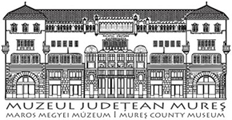Marisia - Maros Megyei Múzeum Évkönyve 30/1. (2010)
Articles
ART AND RELIGIONS ON THE EASTERN PART OF DACIA (WITH SPECIAL REGARD TO THE UPPER MURE§ AREA) NICOLETA MAN Mure? County Museum, Tärgu Mure? Keywords: Dacia, deities, ceramics, patera, terracotta, statues The art of Roman Dacia has a provincial, but well dehned character. Elements of different origins determined both the content and form of artistic manifestations. Despite similarities, some common approaches and mutual influences, the art of each province had certain characteristics, determined by local factors and the models used, as well as by material possibilities of the inhabitants, or the influences of ethnic, religious and military life. This observation is valid for the upper valley of the Mure? area, too, even if it was one of the most distant lands of the Empire, far away from the bright centre of the Roman culture. Aspects of cultural life are represented rich, with various and particular manifestations. Right because it was a far land at the periphery of the empire, where centres of culture are represented exclusively by rural settlements and vicus militaris, the Roman pantheon’s presence was more important than in urban centres from central and southern provinces. Besides the epigraphic pieces, the products of the Roman provincial art frame out a revealing image of the spiritual life. The statues and the funerary monuments - relevant to the taste and the possibilities of the inhabitants - occupy a considerable place. Thus, the statuaria is illustrated by some works of good artistic level: a limestone statue representing Jupiter on his throne (the iconographic type Jupiter tronans or Verospi),‘ the alabaster head of Juno1 2 and a white marble torso.3 The stone statuettes - ex-votos with deity’s image4 - are also well represented. In this category a fragmentary alabaster statuette representing Liber Pater (?) or Hercules Bibax can be found,5 together with a marble head of Liber Pater as Apollo Lyceios6 7 and a statuette of genius loci.' There is no doubt that in the modest dwellings the little figurines of deities were made of burnt-clay, the local potters manufacturing numerous terracotta statuettes of the kind - Juno, 1 Paulovics 1944, 86, fig. 22; Isac 1974, 76-77, pi. II/3a—b; Husar-Man 1996, pi. VI/la-b. 2 Flocal937, 8-9; Zrínyi 1977, 98; Husar-Man 1996, 28, pl. VI/2. 3 Paulovics 1944, 87, fig. 23. 4 Concerning the deity-representation as cult-image see Bärbulescu 1984, 104-105. 5 Pop 1970, 152; Husar-Man 1996, pl. VI/5. 6 Husar-Man 1996, 28, pl. VI/4; determination owes to Al. Diaconescu. 7 Zrínyi 1977, 98, pl. L; Husar-Man 1996, 28, pl. VI/3. MARISIA XXX, p. 95-114
